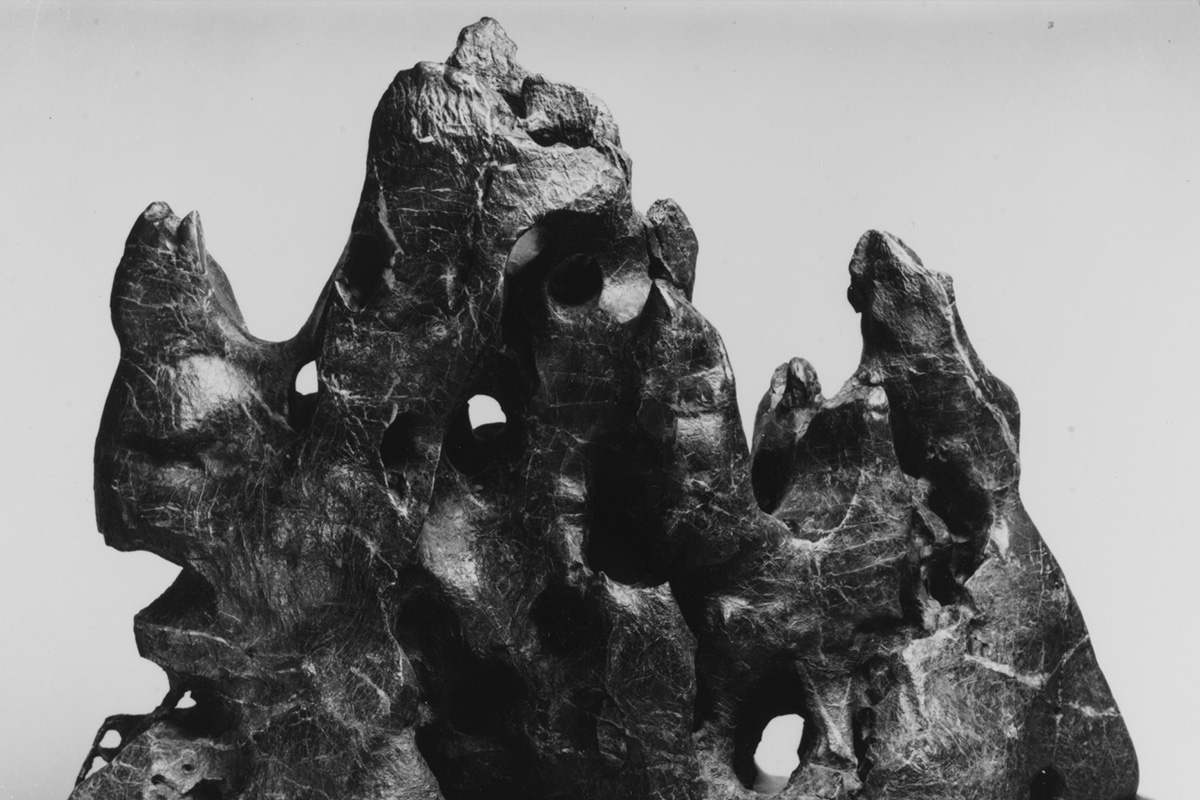Original Location:
- China
- Qing dynasty (1644–1911), 18th–19th century?
Permanent Location:
- Metropolitan Museum of Arts, New York
- Gallery 209
The Medium:
- Black Lingbi limestone; wood stand
The Subject:
The legend of the Gongshi still lives on, a testament to the timeless power of nature's wonders and the human spirit's endless quest for meaning and beauty.
During the Qing dynasty, the appreciation of Gongshi reached its peak. Scholars and artists alike sought after the most magnificent stones to showcase in their homes and gardens. These stones have inspired China’s poets and painters.
The Chinese scholar drew inspiration from the natural world, he did not go out into nature to paint or compose poetry. Rather, he worked within the seclusion of his studio and used these ‘representations of mountains’ as inspiration for his work.
Like a landscape painting, the rock represented a microcosm of the universe on which the scholar could meditate within the confines of his studio or garden.
It also resembles a fantastic mountain, with its rugged peaks and valleys that seem to stretch towards the heavens. Its surface was covered in a lustrous sheen that glistened in the sunlight, and when struck, it emitted a deep, resounding hum that echoed throughout the room.
The rock was the centerpiece of the scholar's collection, displayed on a meticulously carved rosewood pedestal that complemented its natural beauty.
MET Visitors can marvel at this "Rock in the Form of a Fantastic Mountain" from the Qing dynasty (1644-1911), before entering The Astor Chinese Garden Court in Gallery 217.
If you’re curious to see a real Scholar garden with such rocks but without having to fly to China, head to Staten Island to visit the New York Chinese Scholar's Garden, especially during Spring time.


No Comments.